 Human
Performance Lab
Human
Performance Lab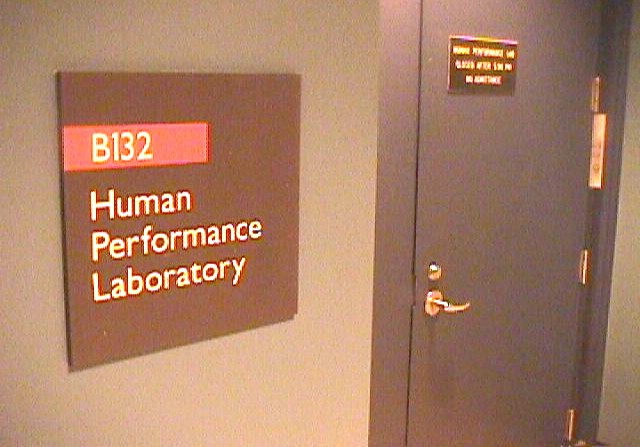
 Human
Performance Lab
Human
Performance Lab
Note: Currently the Lab is unable to conduct performance testing for the general public due to classroom demands and staffing insufficiency
|
|
|
|
|
|
|
|
| The lab is equipped with an array of equipment for assessing cardiovascular fitness. 6 Monark cycle ergometers are available for submaximal and maximal cardiovascular fitness assessment. We also have a Monark cycle dedicated to arm ergometry, 2 Schwinn Airdyne cycles, Nordic Track Ski Trainer, Hydraulic Rower and a portable ergometer trainer. | 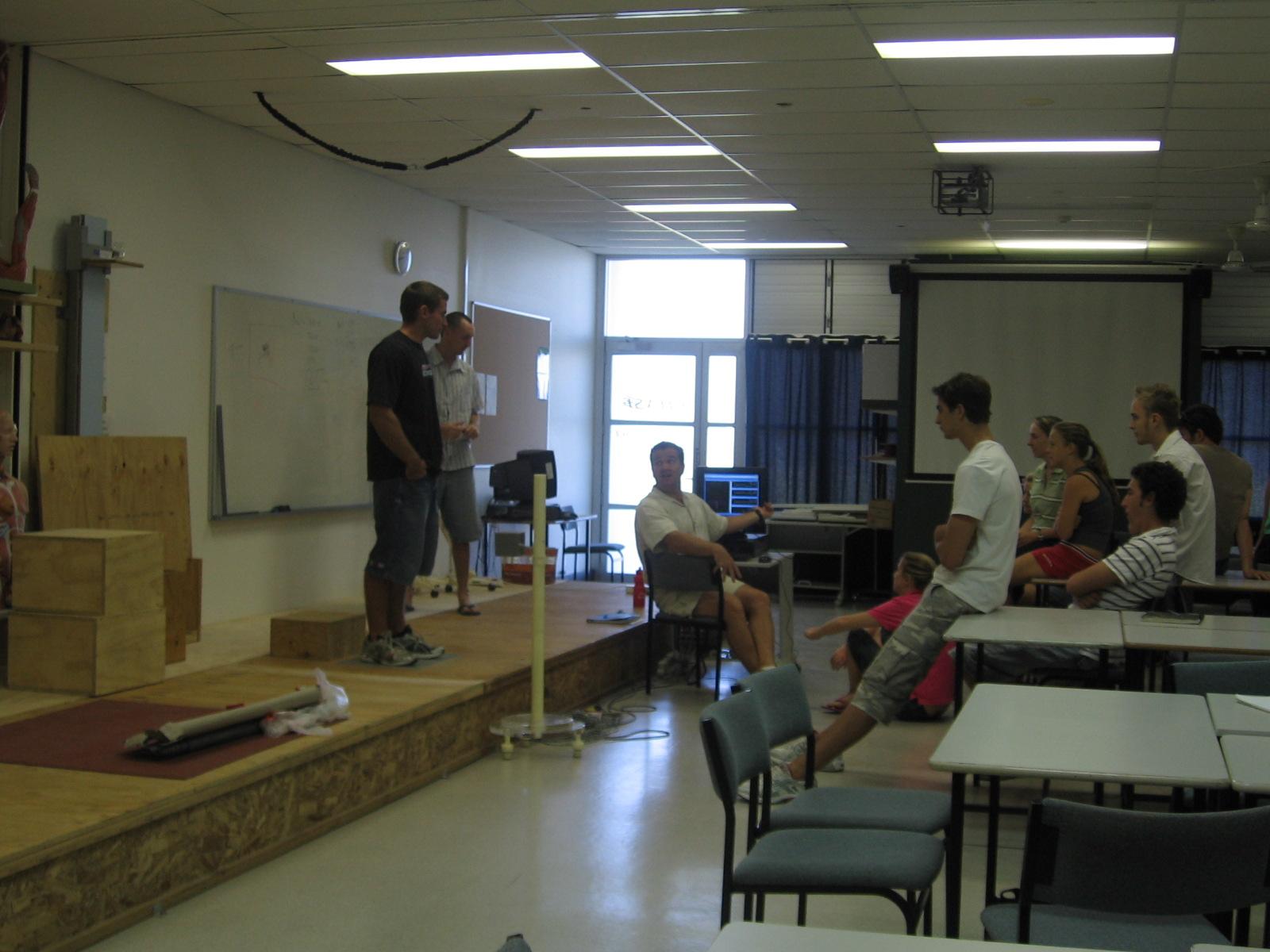 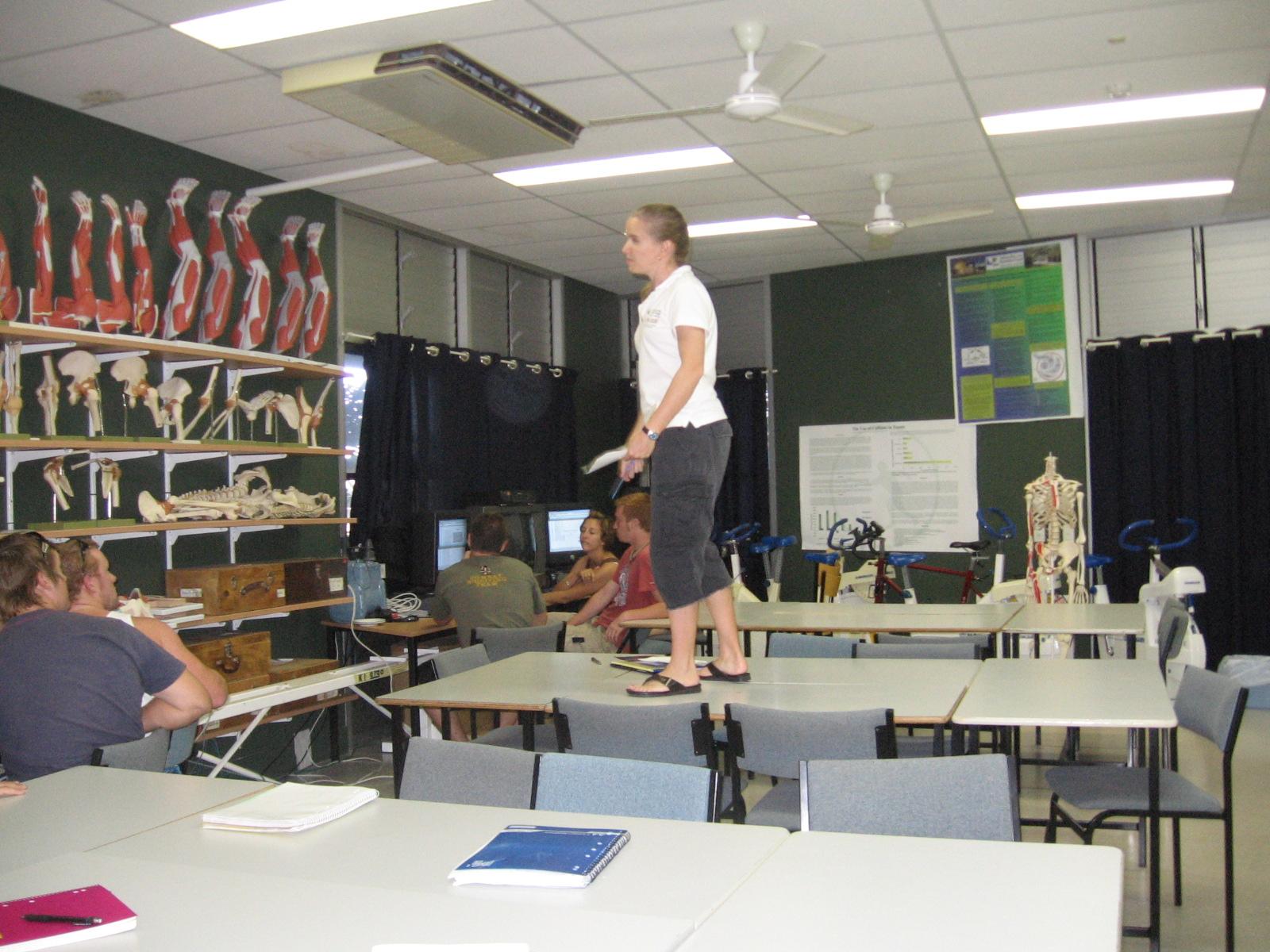 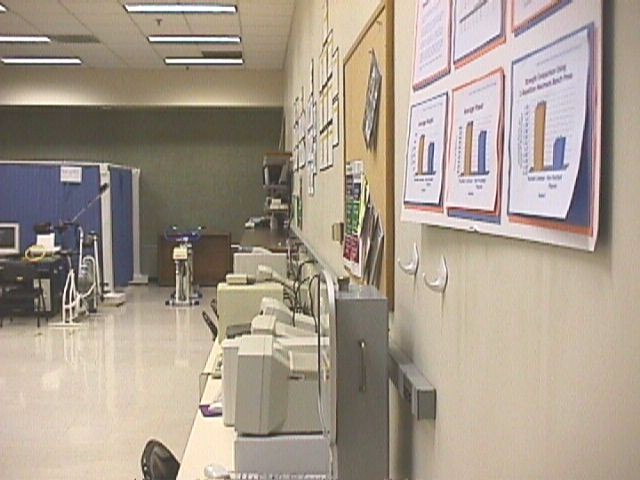 |
| 12 Polar heart rate monitors are used both in a classroom setting (K-12) as well as during testing and training. We have a dedicated computer for heart rate data download. |
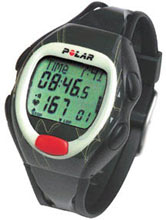 |
| A Med Graphics metabolic cart is available for metabolic testing of apparently healthy and athletic populations. The system can be used with our Quinton 1860 treadmill, Q55 treadmill or with any of our other exercise modalities. |
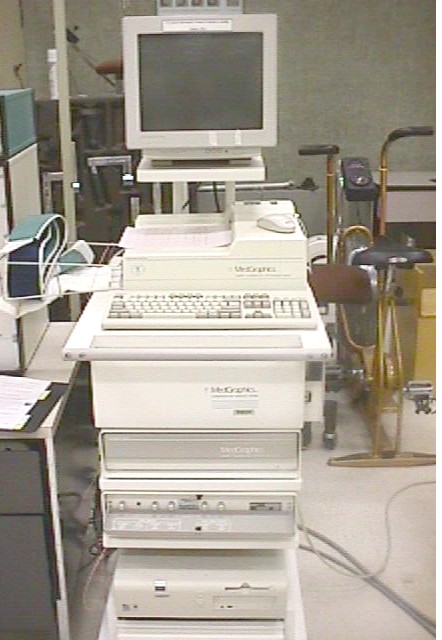 |
| Electrocardiographs are available for both resting evaluation and exercise stress testing. We have a Quinton system that we can use for resting ECG analysis. Our Med Graphics system contains and ECG, which we can use in concert with our metabolic testing. |
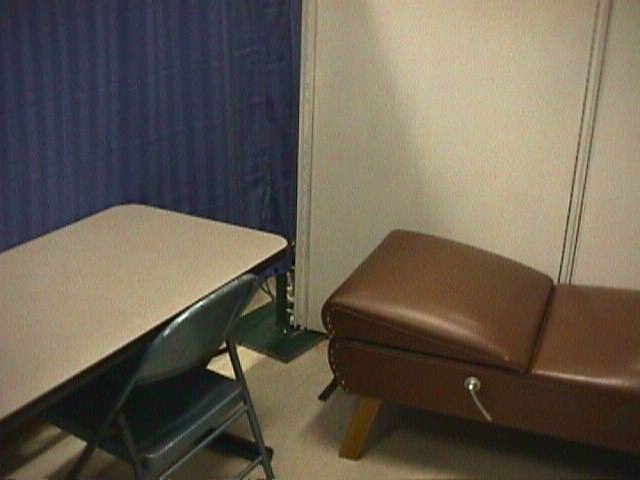 |
| We can also teach the recognition of ECG rhythms and 12 lead ECG with our RhythmSim-ECG simulator (Armstrong Medical) |
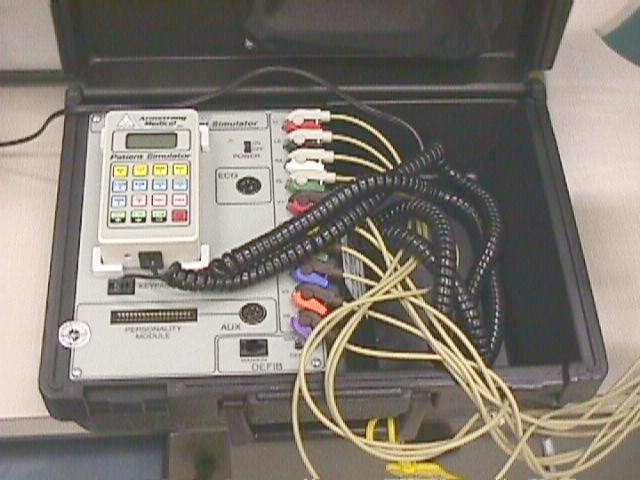 |
| We can assess anaerobic power as well as aerobic. We have switch plates interfaced with clock counters for Margaria step testing. We also have a Wingate specific Monark cycle ergometer, which we have interfaced with software and and optical system from Sports Medicine Industries (SMI). This system allows us to load the subject instantaneously versus the manual cranking of the old Monarks. With the optical interface, RPM are counted with great precision, and power output is computed real-time on the computer! Cool! |
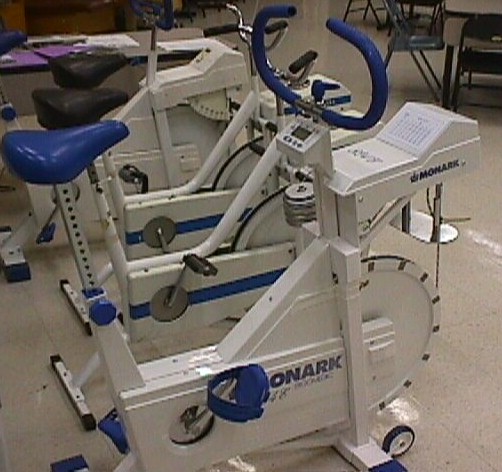 |
| Corival- RPM independent Cycle Ergometer
The workload of the Corival is electro-magnetically controlled and continuously adjustable from 7 to 750 Watt, with a maximum peak load of 999 Watt during 6 minutes. Furthermore, the workload is independent of pedal speed between 40-120 rpm. |
|
TOP
Pulmonary
| We can assess pulmonary function using a variety of methods. Our Med Graphics system is capable of maximal voluntary ventilation, tidal volume and other lung measures. We also have the Vitalograph lung function tester, which can measure FVC and FEV1. Finally, we have a new system, the Microlab Portable Spirometer, which is capable of generating flow volume loops and measuring various aspects of both inspired flow and expired. It is battery powered for added portability. |
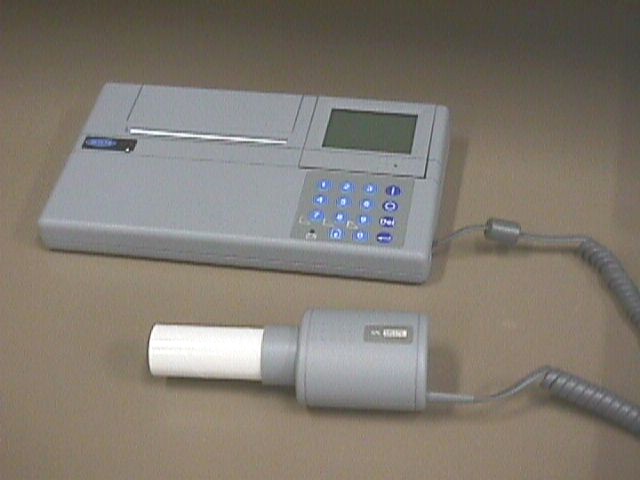 |
| Pulse Oximetry can be used with the Pulmonary patient to identify the point during exercise where O2 desaturation ocurrs, and is a good index for exercise prescription. O2 saturation also declines during high altitude climbing, and can be used to determine risk during ascending (maybe not those Michigan mountains!) |
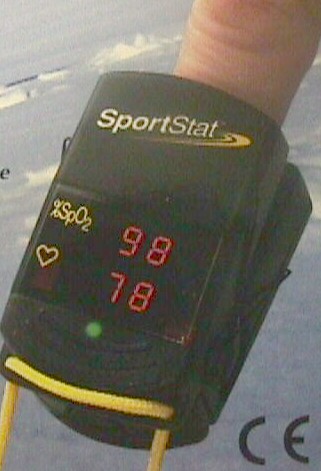 |
TOP
Neuromuscular
| The Cybex II is an older system, but is excellent for testing the isokinetic strength and fatigue curves for healthy, injured and athletic populations. We also use the system to demonstrate the force velocity relationship. |
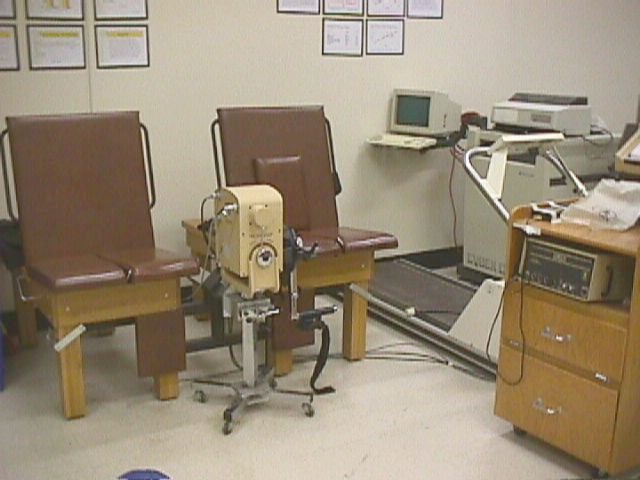 |
|
The Cybex II can be interfaced with our EMG system to integrate an assessment of neuromuscular function and force output. We operate a Noraxon system |
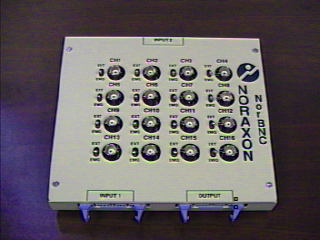 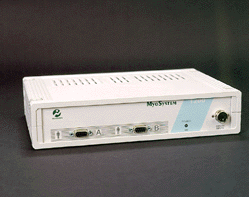 |
| Manual Muscle testing is Possible using the Nicholas Manual Muscle Tester. This measures peak force, time to peak and can store test data. |
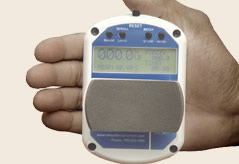 |
TOP
Fitness/ Wellness
Our lab has a comprehensive array of equipment for assessing the
health, wellness and generalized fitness of individuals:
| Jamar Handgrip dynamometers, manual goniometers, electric goniometers, , Digital Scale, Glucometers, Sit n reach boxes | 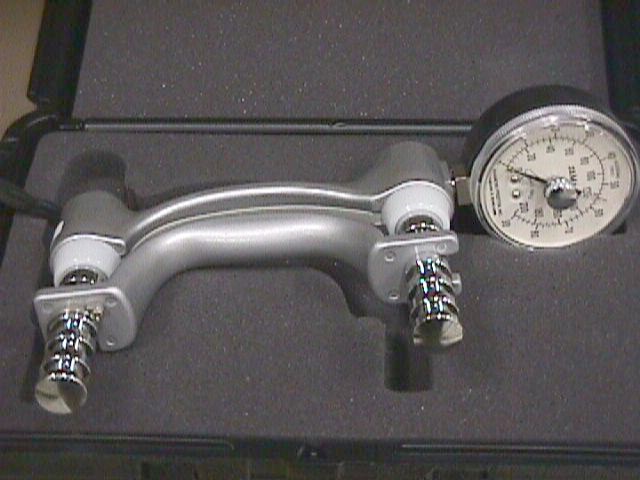 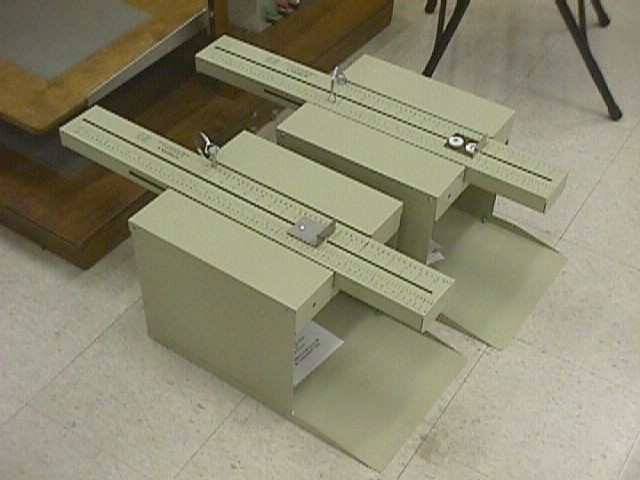 |
| Body Composition: 7 Lange skinfold calipers, Tanita Bioelectric Impedance Analyzer, Underwater Weighing Tank, Infrared Interactance |
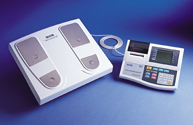 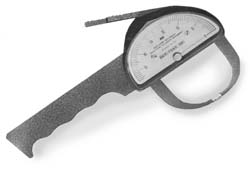 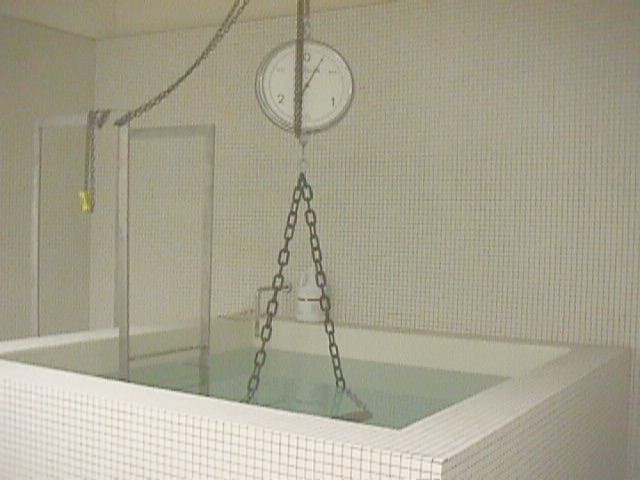 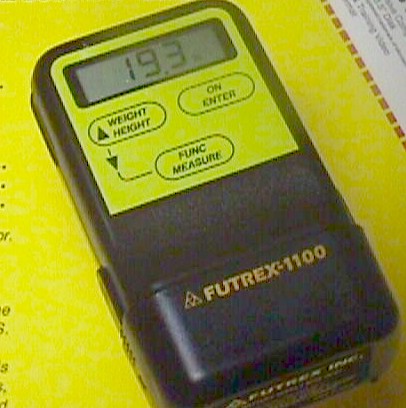 |
| TOP |
Technology
The Human Performance Lab is continually seeking to upgrade computer
technology and technology systems to provide the student the most up to
date experiences.
Computers: 2 Pentium
IV 900 Mhz computers with Internet access and color printers
1 Pentium III with 17" monitor (interfaced with EMG)
1 Pentium MMX with Internet access and Hard Drive/CDROM
4 Pentium 90Mhz computers for spreadsheet applications, dedicated use with
low memory need devices
(heart watch interface, Wingate software)
Software: FitnessGram
Nutritionist Pro Nutrition Analysis Software
Fitness Publisher Software
A.D.A.M. Interactive Physiology (CV, Respiratory, Muscular)
Ultra Coach, Personal Training Software
Personal Trainer - Strength Training Software
Cardiovascular Response to
Prescribed RPE in Men and Women: Arm vs Leg Exercise
Tim Cornman, Michael Kelso and Steve Stierley
Human Performance Lab
Grand Valley State University
Rate of Fatigue in GVSU Women’s
Soccer Players
Heath Hansen and Amy VanderKooi
Human Performance Lab
Grand Valley State University
The purpose of this study was to measure the rate of fatigue and
strength to body weight ratios during leg extension exercise in GVSU Women
Soccer players. Ten subjects (age= 19.2 + 1.1y, Ht =64.9 +
2.8in, Mass = 151.0 + 16.4 lbs, % Fat = 22.0 +
0.03) volunteered to complete a peak torque leg extension test for the
right and left leg (60deg/s) as well as a fatigue test (15 reps @ 240 deg/s).
Peak torque/body weight ratios and fatigue index (ending torque/start torque)*100)
was calculated for each subject. Data showed no significant differences
in mean peak torque between the right (107.7 + 17.9 ft-lbs) and
left (108.0 + 14.4 ft-lbs) leg. In addition fatigue index was also
no different (rt = 23.2 + 18.05%, lt = 20.3 + 7.5%). However
individual data do show a grouping of injured and non injured players for
peak torque/BW and a wide range in fatigue index values. These results
indicate that the strength and fatigue tests may help identify injured
players or players with potential to injure. They can also help establish
consistent criteria for return to play indices.
Quadriceps and Hamstring Strength:
Muscle Balance and Performance
Joe Frees, Sam Glass and Michelle Smith
Human Performance Lab
Grand Valley State University
Force Estimation in Dominant
and Non-Dominant Forearm Flexors
Kelly Wiers and Julie Schaaf
Human Performance Lab
Grand Valley State University
Strength to Body Weight Ratios
in Trained Men and Women
Ryan Baranowski Brett Vaughn Dana Robinett
Human Performance Lab
Grand Valley State University